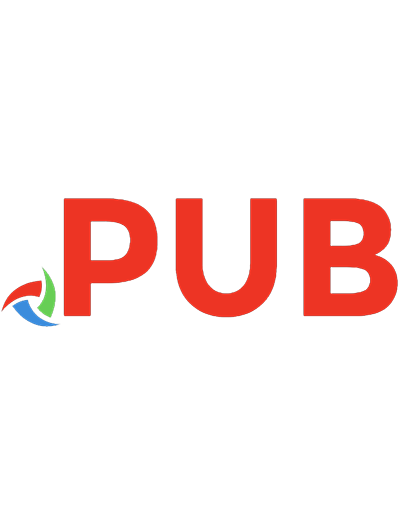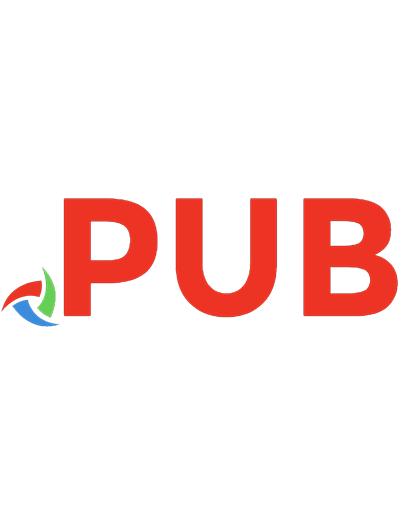CCNA® routing and switching complete review guide [Second edition] 9781119288367, 9781119288381, 9781119288374, 1001111915, 1119288363
"The CCNA Routing and Switching Complete Review Guide offers clear, concise review for Exams 100-105, 200-105, and
786 42 11MB
English Pages xxxiii, 445 pages : illustrations ; 24 cm Year 2017;2016
Table of contents :
Introduction xiii Assessment Test xxvi Chapter 1 Network Fundamentals 1 Compare and contrast OSI and TCP/IP models 2 Compare and contrast TCP and UDP protocols 5 Describe the impact of infrastructure components in an enterprise network 10 Describe the effects of cloud resources on enterprise network architecture 11 Compare and contrast collapsed core and three-tier architectures 14 Compare and contrast network topologies 18 Select the appropriate cabling type based on implementation requirements 19 Apply troubleshooting methodologies to resolve problems 28 Configure, verify, and troubleshoot IPv4 addressing and subnetting 29 Compare and contrast IPv4 address types 42 Describe the need for private IPv4 addressing 46 Identify the appropriate IPv6 addressing scheme to satisfy addressing requirements in a LAN/WAN environment 47 Configure, verify, and troubleshoot IPv6 addressing 50 Configure and verify IPv6 Stateless address Auto configuration 53 Compare and contrast IPv6 address types 55 Review Questions 58 Chapter 2 LAN Switching Technologies 61 Describe and verify switching concepts 62 Interpret Ethernet frame format 66 Troubleshoot interface and cable issues (collisions, errors, duplex, speed) 68 Configure, verify, and troubleshoot VLANs (normal/extended range) spanning multiple switches 70 Configure, verify, and troubleshoot interswitch connectivity 76 Configure, verify, and troubleshoot STP protocols 84 Configure, verify, and troubleshoot STP-related optional features 92 Configure and verify layer 2 protocols 94 Configure, verify, and troubleshoot (layer 2/layer 3) EtherChannel 102 Describe the benefits of switch stacking and chassis aggregation 109 Review Questions 111 Chapter 3 Routing Technologies 115 Describe the routing concepts 116 Interpret the components of a routing table 123 Describe how a routing table is populated by different routing information sources 127 Configure, verify, and troubleshoot inter-VLAN routing 127 Compare and contrast static routing and dynamic routing 136 Compare and contrast distance vector and link state routing protocols 138 Compare and contrast interior and exterior routing protocols 139 Configure, verify, and troubleshoot IPv4 and IPv6 static routing 139 Configure, verify, and troubleshoot single area and multi-area OSPFv2 for IPv4 (excluding authentication, filtering, manual summarization, redistribution, stub, virtual-link, and LSAs) 146 Configure, verify, and troubleshoot single area and multi-area OSPFv3 for IPv6 (excluding authentication, filtering, manual summarization, redistribution, stub, virtual-link, and LSAs) 174 Configure, verify, and troubleshoot EIGRP for IPv4 (excluding authentication, filtering, manual summarization, redistribution, stub) 178 Configure, verify, and troubleshoot EIGRP for IPv6 (excluding authentication, filtering, manual summarization, redistribution, stub) 187 Configure, verify, and troubleshoot RIPv2 for IPv4 (excluding authentication, filtering, manual summarization, redistribution) 193 Troubleshoot basic layer 3 end-to-end connectivity issues 199 Review Questions 221 Chapter 4 WAN Technologies 225 Configure and verify PPP and MLPPP on WAN interfaces using local authentication 226 Configure, verify, and troubleshoot PPPoE client-side interfaces using local authentication 239 Configure, verify, and troubleshoot GRE tunnel connectivity 241 Describe WAN topology options 246 Describe WAN access connectivity options 248 Configure and verify single-homed branch connectivity using eBGP IPv4 (limited to peering and route advertisement using Network command only) 253 Describe basic QoS concepts 259 Review Questions 269 Chapter 5 Infrastructure Services 271 Describe DNS lookup operation 272 Troubleshoot client connectivity issues involving DNS 275 Configure and verify DHCP on a router (excluding static reservations) 276 Troubleshoot client- and router-based DHCP connectivity issues 278 Configure, verify, and troubleshoot basic HSRP 281 Configure, verify, and troubleshoot inside source NAT 293 Configure and verify NTP operating in a client/server mode 302 Review Questions 305 Chapter 6 Infrastructure Security 307 Configure, verify, and troubleshoot port security 308 Describe common access layer threat mitigation techniques 311 Configure, verify, and troubleshoot IPv4 and IPv6 access list for traffic filtering 314 Verify ACLs using the APIC-EM Path Trace ACL Analysis tool 338 Configure, verify, and troubleshoot basic device hardening 341 Describe device security using AAA with TACACS+ and RADIUS 352 Review Questions 356 Chapter 7 Infrastructure Management 359 Configure and verify device-monitoring protocols 360 Troubleshoot network connectivity issues using ICMP echo-based IP SLA 369 Configure and verify device management 371 Configure and verify initial device configuration 392 Perform device maintenance 402 Use Cisco IOS tools to troubleshoot and resolve problems 413 Describe network programmability in enterprise network architecture 417 Review Questions 422 Appendix Answers to Review Questions 425 Chapter 1: Network Fundamentals 426 Chapter 2: LAN Switching Technologies 426 Chapter 3: Routing Technologies 427 Chapter 4: WAN Technologies 428 Chapter 5: Infrastructure Services 428 Chapter 6: Infrastructure Security 429 Chapter 7: Infrastructure Management 430 Index 431
![CCNA® routing and switching complete review guide [Second edition]
9781119288367, 9781119288381, 9781119288374, 1001111915, 1119288363](https://dokumen.pub/img/200x200/ccna-routing-and-switching-complete-review-guide-second-edition-9781119288367-9781119288381-9781119288374-1001111915-1119288363.jpg)


![31 Days Before Your CCNA Routing and Switching Exam : a Day-By-Day Review Guide for the ICND2 (200-101) Certification Exam [Third Edition]
9780133479843, 0133479846](https://dokumen.pub/img/200x200/31-days-before-your-ccna-routing-and-switching-exam-a-day-by-day-review-guide-for-the-icnd2-200-101-certification-exam-third-edition-9780133479843-0133479846.jpg)





![CCIE routing and switching certification guide [4th ed]
9781587059803, 1587059800](https://dokumen.pub/img/200x200/ccie-routing-and-switching-certification-guide-4th-ed-9781587059803-1587059800.jpg)
